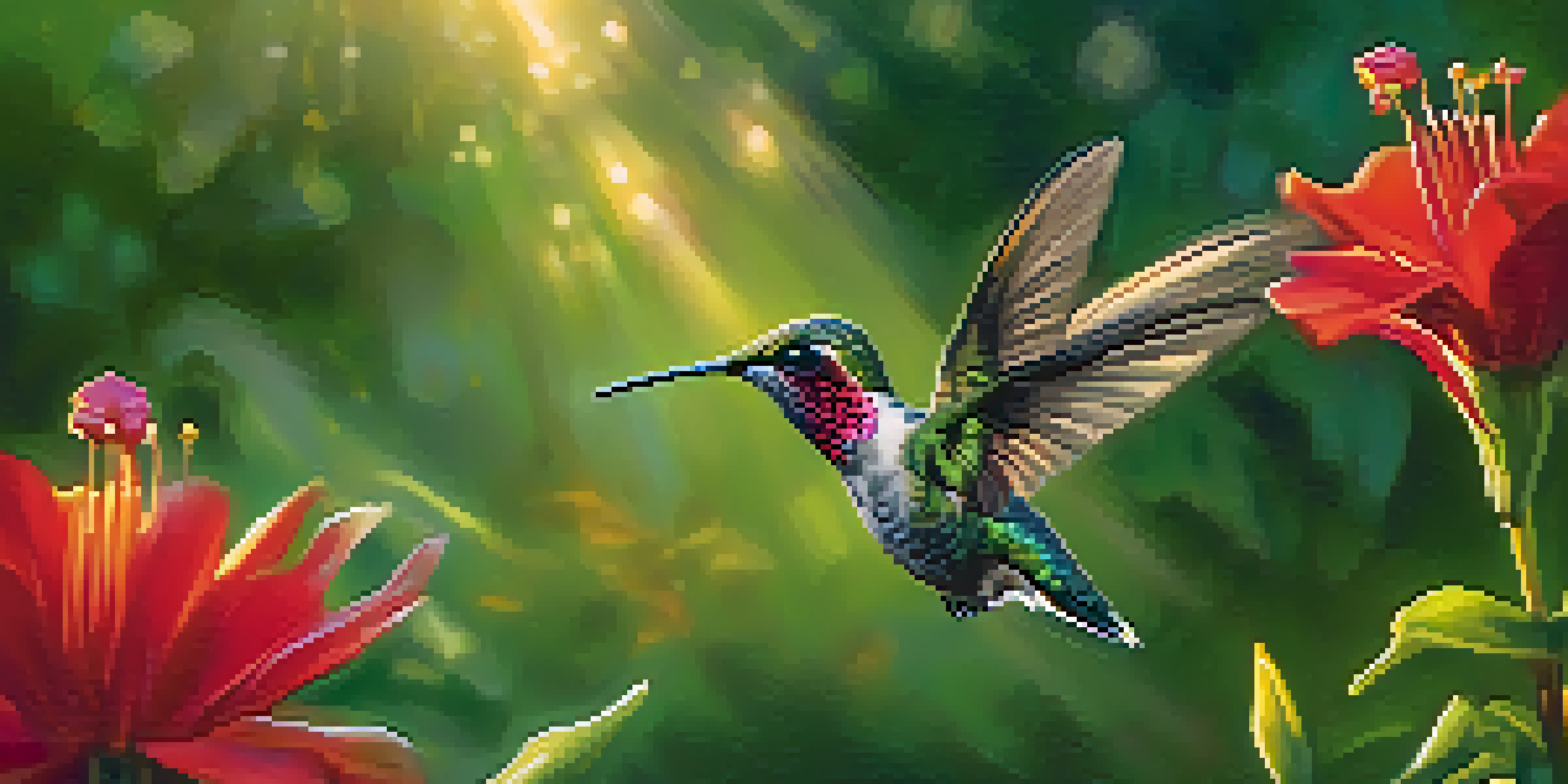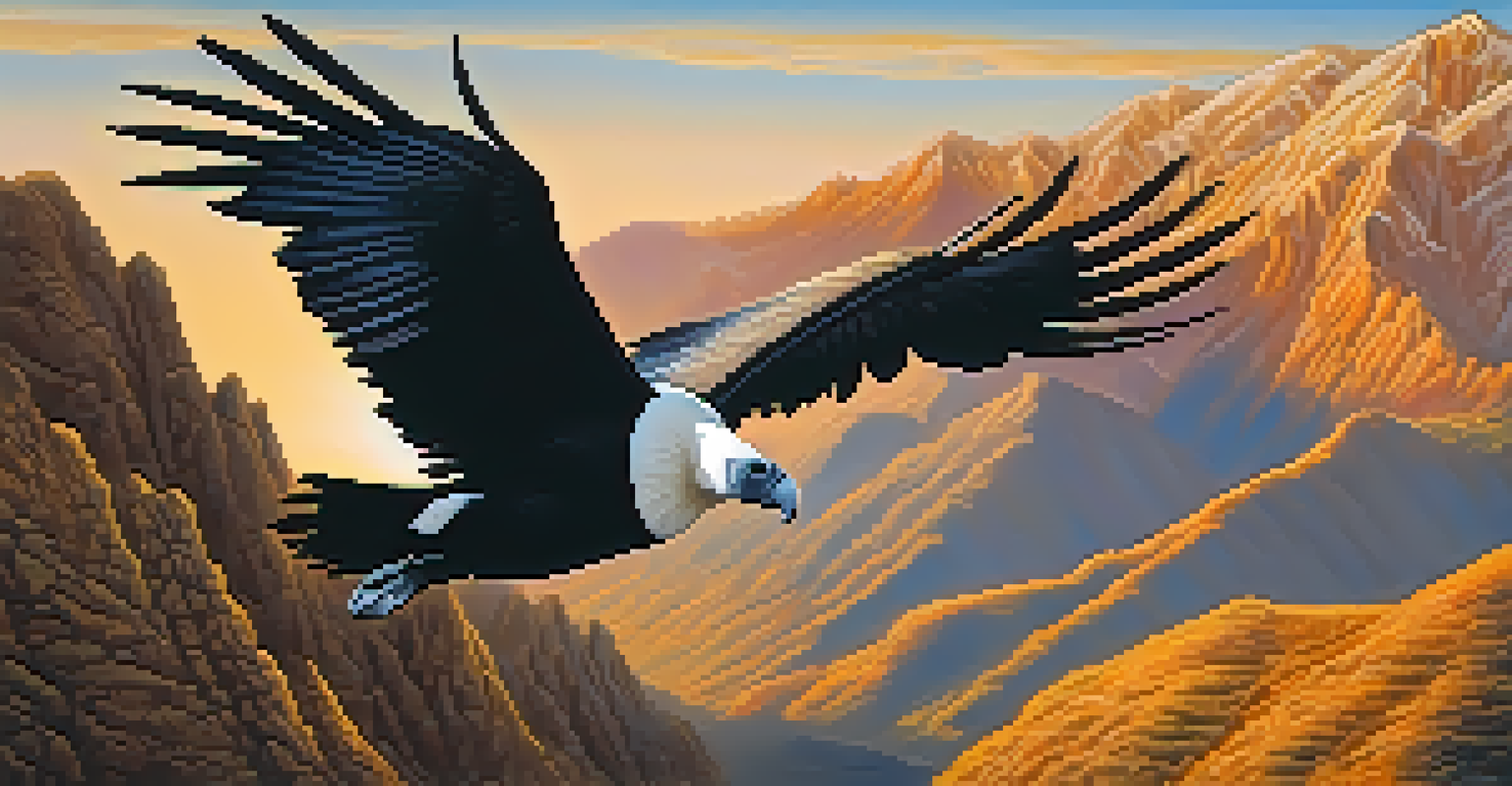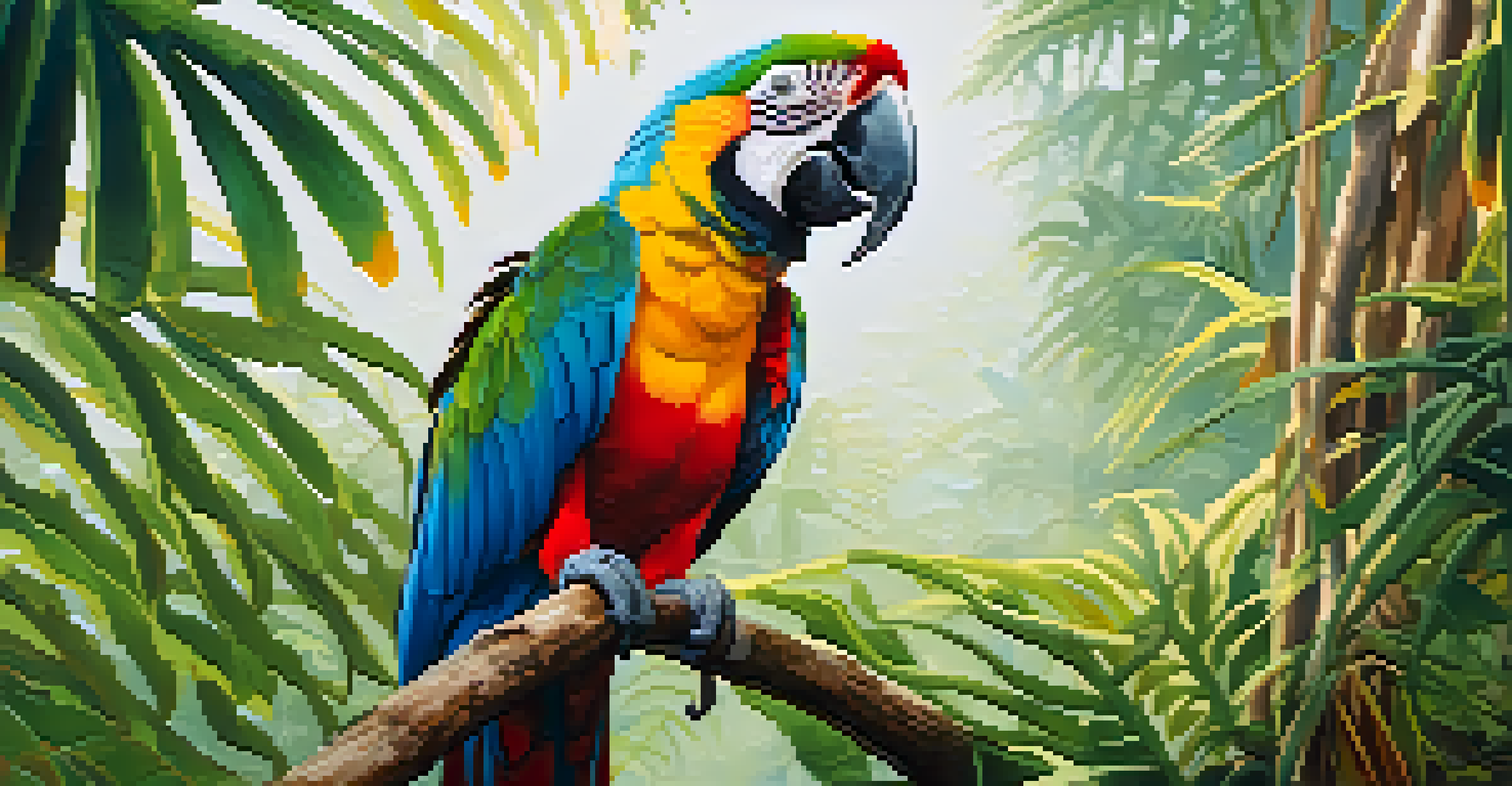Techniques for Capturing Birds in Flight in Peru

Understanding Bird Behavior for Better Photography
Before you even pick up your camera, it’s essential to understand bird behavior. Birds often have specific patterns of movement, especially when feeding or nesting. Observing how they interact with their environment can help you anticipate their actions and find the perfect moment to capture. For instance, knowing that a certain species tends to return to a feeding spot can help you position yourself for the best shot.
The bird is powered by its own life and by its motivation.
Patience is key in bird photography. Spend time in the location, watching and learning about the birds. This not only gives you insight into their habits but also allows you to become familiar with the lighting conditions and the best angles for photography. The more you know about your feathered subjects, the better your chances of getting that stunning shot.
In Peru, where biodiversity is rich, mastering the art of observation can make all the difference. With countless species flying through vibrant landscapes, understanding their behavior can lead to breathtaking images that tell a story about the wildlife and their habitats.
Choosing the Right Equipment for Bird Photography
Selecting the right camera and lens is crucial for capturing birds in flight. A DSLR or mirrorless camera with a fast autofocus system and a high frame rate will help you seize those fleeting moments. Additionally, a telephoto lens allows you to get close-up shots without disturbing the birds, which is particularly important in preserving their natural behavior.

Consider investing in a sturdy tripod or monopod to stabilize your shots, especially in low-light conditions or when using heavier lenses. This support can significantly reduce camera shake, resulting in clearer images. Moreover, using a camera with a high ISO capability can help you shoot in various lighting conditions, essential for early mornings or late afternoons.
Understand Bird Behavior First
Observing bird behavior helps you anticipate their actions for better photography.
Ultimately, the right equipment can elevate your bird photography experience. In the rich landscapes of Peru, having the right tools not only enhances your photography but also allows you to enjoy the beauty of the environment while capturing its avian inhabitants.
Mastering Camera Settings for Flight Shots
Getting the right camera settings is vital for capturing sharp images of birds in flight. Start with a fast shutter speed—at least 1/1000th of a second—to freeze the motion. This is particularly important when photographing fast-flying species, such as hummingbirds or swallows, which can be quite challenging to capture.
Photography is the story I fail to put into words.
Aperture settings also play a crucial role; a wider aperture (like f/4 or f/5.6) can create a beautiful background blur, helping your subject stand out. Simultaneously, keeping the ISO at a reasonable level will ensure your images remain clear without too much noise, especially in varying light conditions found in Peru's diverse ecosystems.
Don't forget to experiment with burst mode, which allows you to take several frames in quick succession. This feature can be a lifesaver when trying to catch birds in mid-flight, as it increases your chances of getting that perfect shot where every feather is in focus.
Finding the Best Locations for Bird Photography
Peru boasts a variety of habitats, each home to unique bird species. Researching the best locations, such as the Amazon rainforest, the Andes mountains, or coastal regions, can lead to incredible photographic opportunities. Each environment offers different species, so selecting the right location based on your interests is crucial.
Additionally, visiting national parks and reserves can provide you with access to protected areas where birds are more accustomed to human presence. Places like Manu National Park or Tambopata National Reserve are known for their rich biodiversity and can increase your chances of encountering rare species.
Choose the Right Equipment
Using appropriate cameras and lenses is essential for capturing high-quality bird images.
Finally, joining local birdwatching groups can be beneficial. Not only do they offer insights into the best spots to photograph birds, but they also provide tips from experienced photographers who know the area well, enhancing your overall experience in the field.
Utilizing Natural Light for Stunning Bird Photos
Lighting can make or break your bird photography. The golden hours—early morning and late afternoon—provide soft, diffused light that enhances colors and details in your shots. During these times, birds are often more active, providing ample opportunities for capturing dynamic images against beautiful backgrounds.
However, mid-day sun can create harsh shadows and overly bright highlights. If you find yourself photographing during these hours, consider moving to shaded areas or using a fill flash to balance the light. This technique can help reduce contrast and make your images more visually appealing.
Understanding how to work with natural light in different conditions can elevate your photography. In Peru's stunning landscapes, the right lighting can transform an ordinary shot into an extraordinary one, highlighting the beauty of both the birds and their environments.
Incorporating Composition Techniques in Bird Photography
Composition is a powerful tool in photography, and this holds true for bird photography as well. Utilizing the rule of thirds can lead to more dynamic and engaging images. For example, placing the bird off-center in the frame can create a sense of movement and make the photo more visually interesting.
Additionally, consider incorporating leading lines, such as branches or pathways, that draw the viewer's eye toward the bird. This technique not only enhances the composition but also guides the audience through the story you’re telling with your photograph.
Leverage Natural Light Effectively
Utilizing soft, natural light during golden hours enhances the beauty of bird photographs.
Experimenting with different perspectives can also yield unique results. Shooting from a low angle can showcase the bird against the sky, while a higher angle can provide a different context, revealing the bird's interactions with its environment. In Peru, the diversity of landscapes offers countless opportunities to get creative with composition.
Post-Processing Tips for Bird Photography
Post-processing is an essential part of photography that can elevate your bird images. Using software like Adobe Lightroom or Photoshop allows you to enhance colors, adjust exposure, and fine-tune details. This step can transform a good photo into a great one by bringing out the vibrancy of the bird’s plumage and the beauty of its surroundings.
Consider sharpening your images slightly to emphasize feather details, but be cautious not to overdo it, as this can create unnatural results. Cropping can also help improve composition, allowing you to focus on the bird and eliminate distractions from the background.

Remember, post-processing is about enhancing your images while keeping them true to life. In the context of Peru’s breathtaking avian diversity, this step can help convey the beauty and uniqueness of the species you've captured, allowing your audience to appreciate them as much as you do.